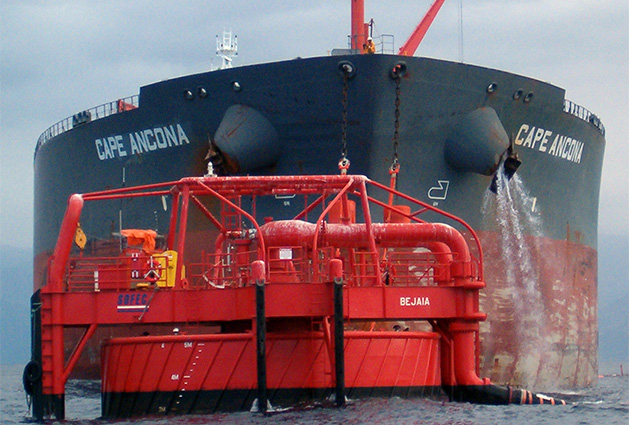In 1983, SOFEC was acquired by English company, Vickers P.L.C. Soon thereafter, during January 1988, a management group headed by SOFEC’s President, Mr. Bill Kiely, acquired the company from Vickers.
Mr. Kiely and five other Management Executives led and grew the company through many successful projects. In the early 1990s, SOFEC’s success and track record caught the attention of FMC Corporation (“FMC”), who at the time was developing its “oilfield of the future” strategy. In June 1993, amid several other similar acquisitions, FMC purchased 100% of the shares of SOFEC as a key component of its new strategic direction.
By in large, FMC provided corporate-level support, guidance and financial maturity to SOFEC during its ownership period; while at the same time leaving SOFEC’s Management Team in place as well as its unique culture. During these years, SOFEC’s processes and business systems were enhanced and several important projects in the company’s history were delivered, most notably at the time, the Disconnectable Internal Turret System for PetroCanada’s TerraNova FPSO in the Barents Sea and the Sonatrach Project for Algeria which included the provision of five onshore and offshore import/export terminals.
Despite the successes of FMC-SOFEC, FMC’s corporate complexion, strategy and even its name (then “FMC Technologies, Inc., or FTI”) had evolved such that it no longer focused on holding in-house capabilities for an entire field development, from wellhead to refinery; and instead it was primarily focused on its proprietary, manufactured subsea components. As part of this transition, SOFEC’s specialized yet project-based sales model became a better fit with its long-standing and top client, FPSO-provider, MODEC, Inc. of Japan.
Accordingly, 100% of the shares of FMC Technologies Floating Systems, Inc. were acquired by MODEC and Mitsui Engineering and Shipbuilding in early 2007. SOFEC was acquired to enable MODEC to strengthen its competitiveness in the FPSO industry, and also to ensure ongoing access to SOFEC’s patented turret, swivel and mooring technologies. For SOFEC, not only was the company then formally merged with its long-standing client and business partner, but MODEC Management challenged and supported SOFEC in greatly expanding its overall sales volume and non-MODEC client base. The “SOFEC” name was officially returned and SOFEC was reborn.
In its lifetime, SOFEC has completed over 130 global projects and has developed a highly sophisticated technology base with over 80 worldwide patents. This technology has expanded SOFEC’s market from import/export terminals, to advanced permanent mooring solutions for floating production and storage facilities, to Disconnectable Single Point Mooring systems for extreme environments and ultra-deepwater, remote locations.
Many of the key personnel who were involved during SOFEC’s initial and very early years remain active and continue to be associated with SOFEC. This first-class team was a catalyst for the company’s development and was instrumental in SOFEC becoming a global leader in providing turnkey state-of-the-art Single Point Mooring Systems and fluid transfer technology to customers worldwide.
SOFEC’s technology includes exceptional capabilities for the prediction of loads and motions on floating structures and the ability to successfully design and construct specialty equipment to meet an increasingly complex variety of applications and operational conditions.
SOFEC’s engineers and designers continue to be experts in the development of environmental forces, hydrodynamic analysis, structural dynamics, geotechnical analysis and the design of structural, mechanical and hydraulic systems. In addition to these classical engineering capabilities, SOFEC’s team members are exceedingly skilled in the practical requirements imposed by the fabrication and assembly of large structural components and heavy, precision machined weldments. That expertise transfers to the complete spectrum of offshore activities related to transportation, installation, testing and maintenance of these systems in ocean environments.



